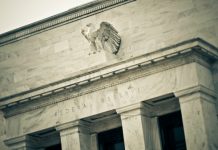The Canadian economy expanded by 2.9% quarter/quarter annualized (q/q) in Q3 2022. However, the flash estimate for October showed no change.
Loosening supply chains and demand for commodities spurred GDP. Exports (+8.6%) were driven by high demand for “crude oil and bitumen, and farm and fishing products”, while inventories surged to their highest level on record on the back of “manufacturing, wholesale trade, and retail trade sectors.”
In contrast, spending by households fell by 1% q/q annualized. Statistics Canada noted that this was driven by a significant decline in spending on goods, with reduced outlays on “new trucks, vans and sport utility vehicles, furniture and furnishings, and pharmaceutical products.” Spending on services was positive (+3.8% q/q), partly driven by still elevated spending on travel.
Housing investment contracted again, down 15.4% q/q. The impact of higher interest rates continues to weigh on the housing sector as resale activity and renovation spending fell.
Key Implications
Canada’s economy continues its streak of above trend growth in the third quarter, but there are worrying trends under the headline. Going into today’s report, we were looking for the impact of loosening supply chains and the push to develop Canada’s infrastructure to take advantage of our abundance of natural resources. This showed up in strong export growth and continued investment of machinery, equipment, and non-residential structures. However, rising interest rates and high inflation have weighed on consumer spending, a trend which has started earlier than expected, but should last through next year.
Canadian bond yields are moving higher this morning, with the CA 2-year and 10-year at 3.97% and 3.0%. It is expected that the BoC will continue to hike its policy rate by 50 basis points in December, though we believe an end to the hiking cycle is coming. The interest rate sensitive sectors have retrenched, with residential investment down 15.3% in Q3. This is flowing to the consumer side of the economy, which will force the BoC to soon pause and wait for the impact of past interest rate hikes to have their effect on the economy.













